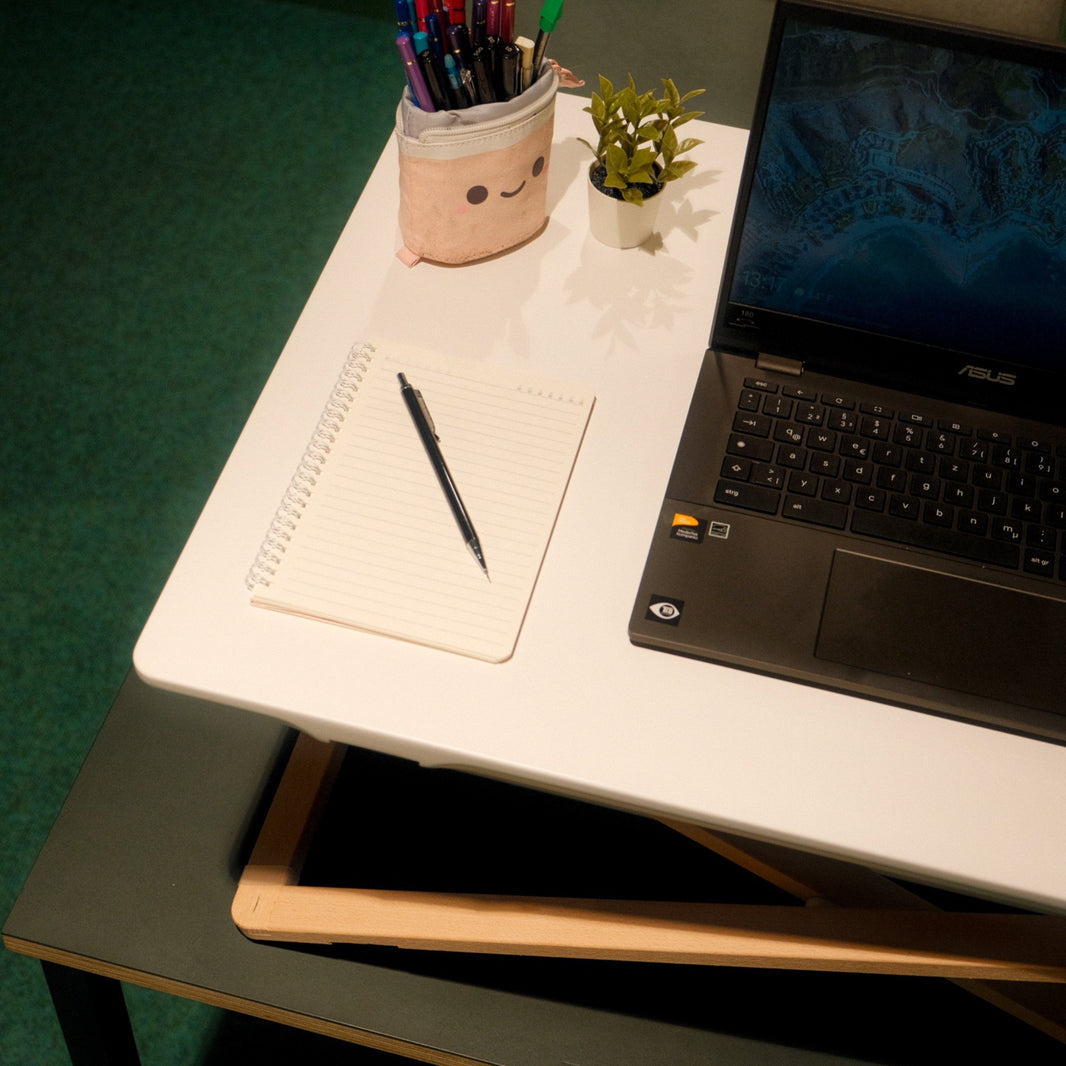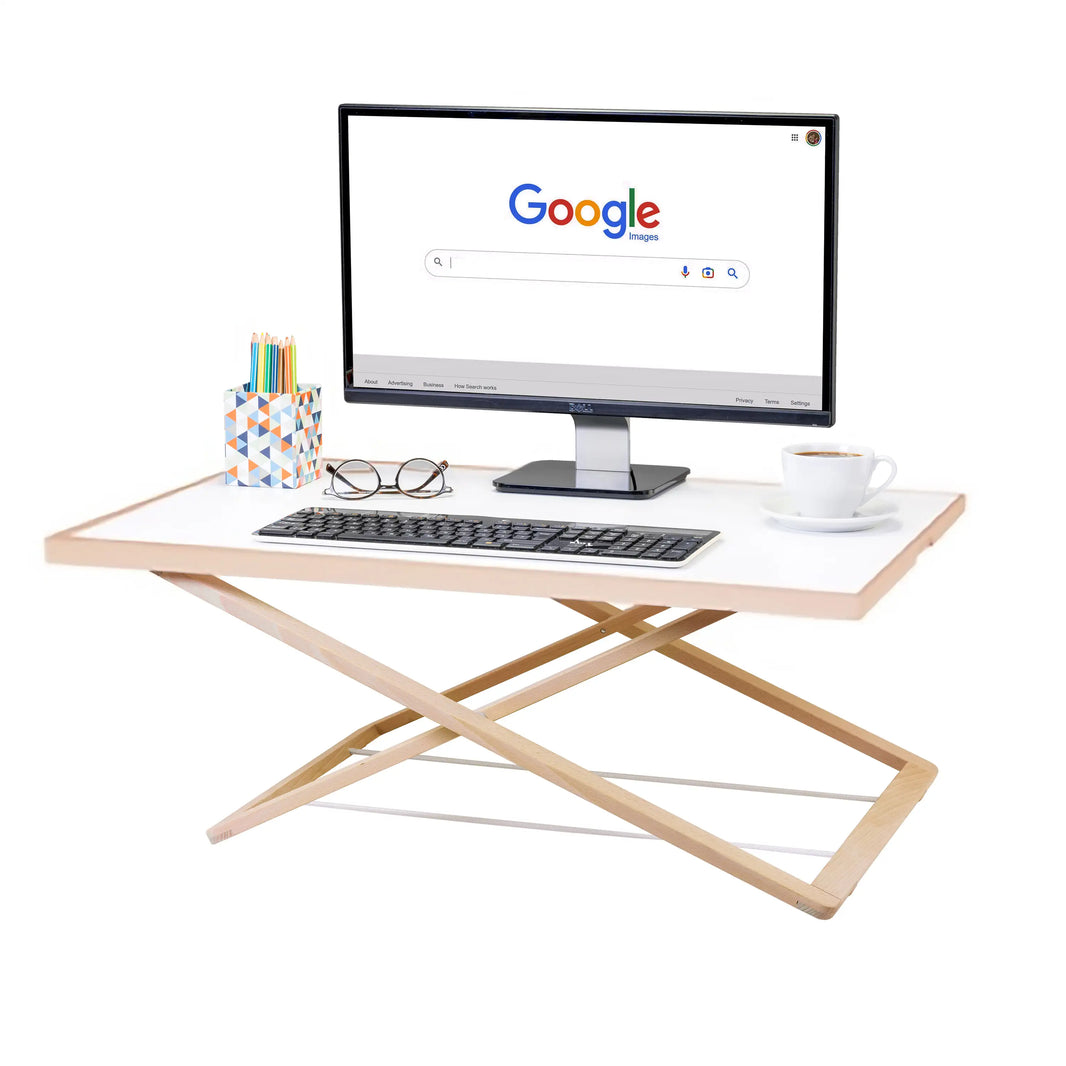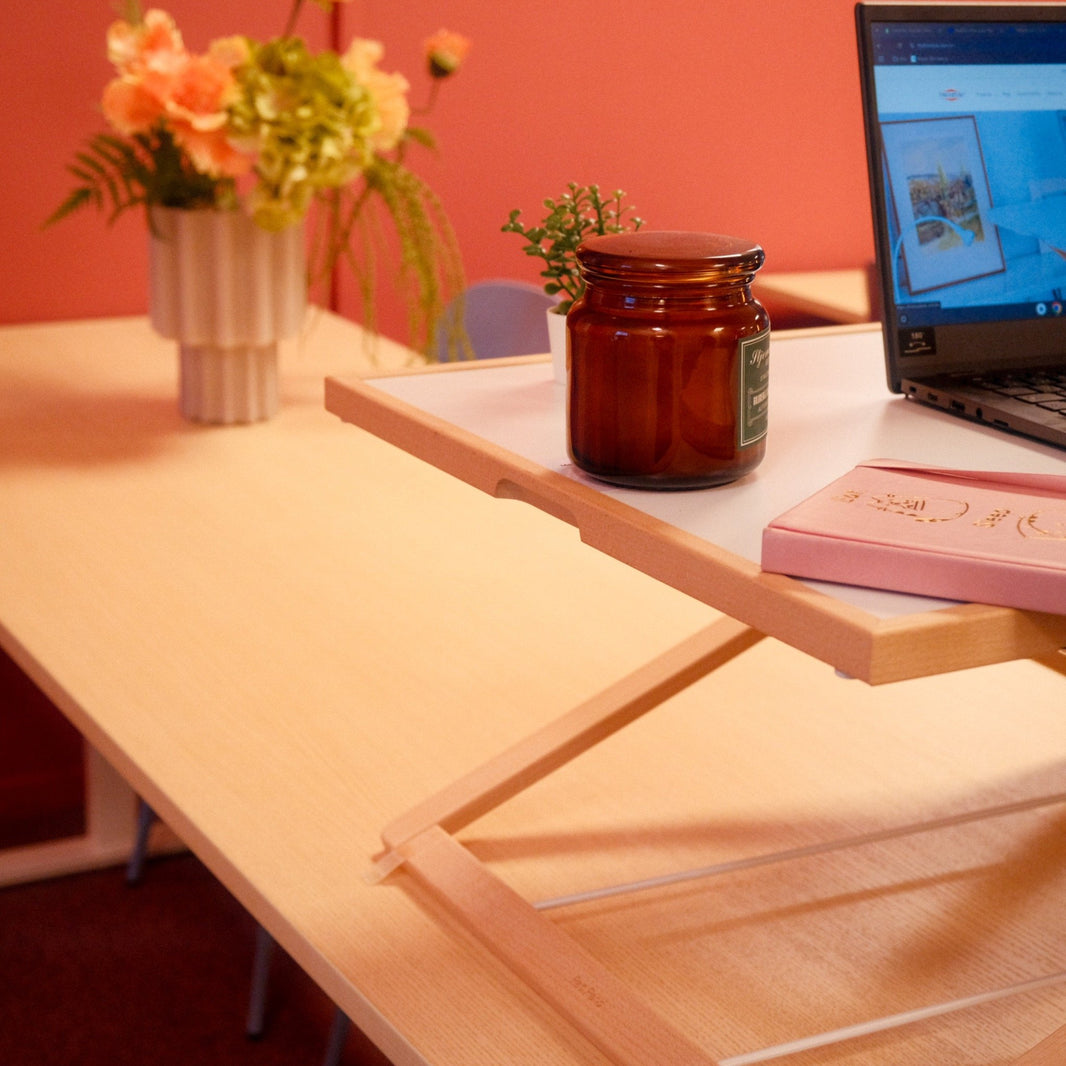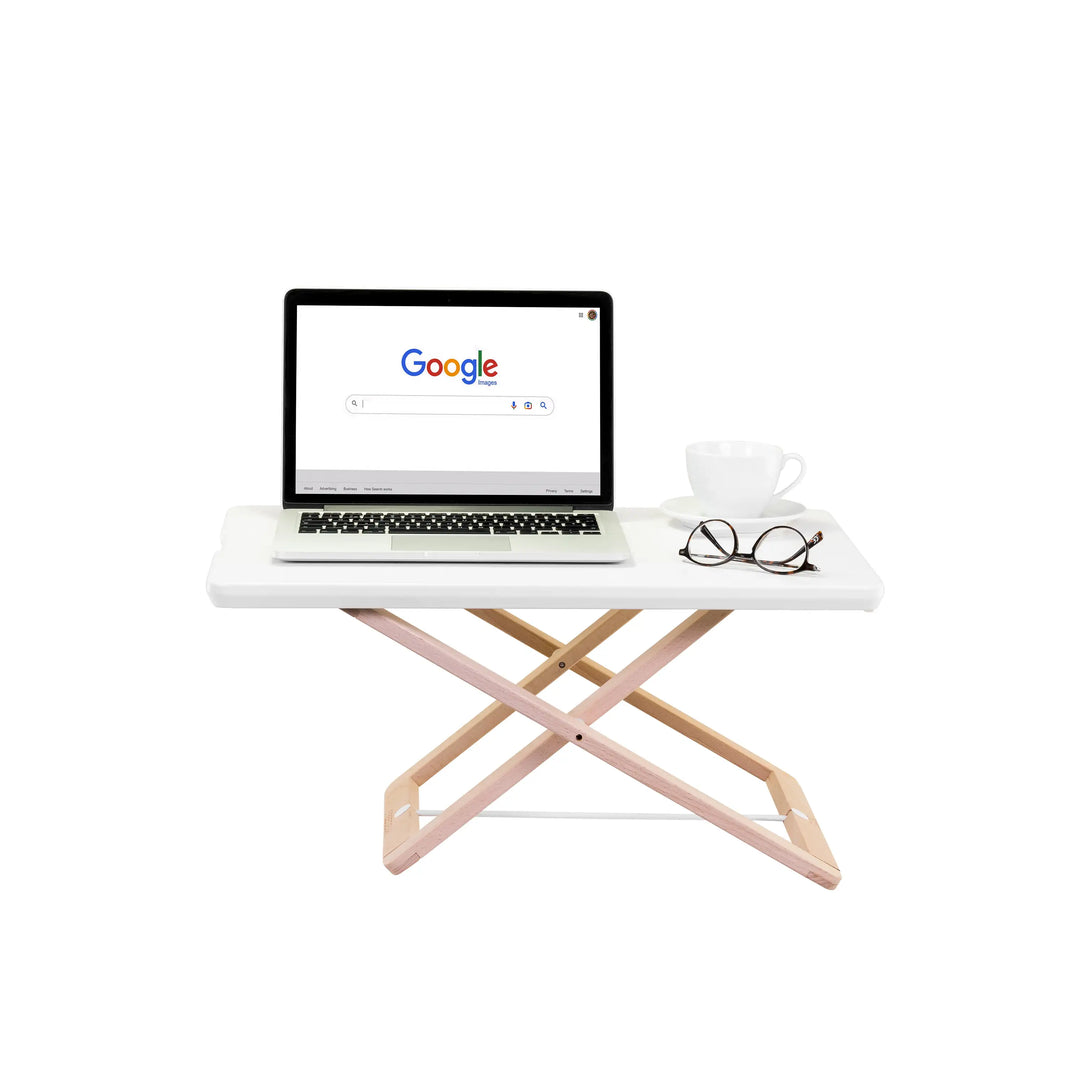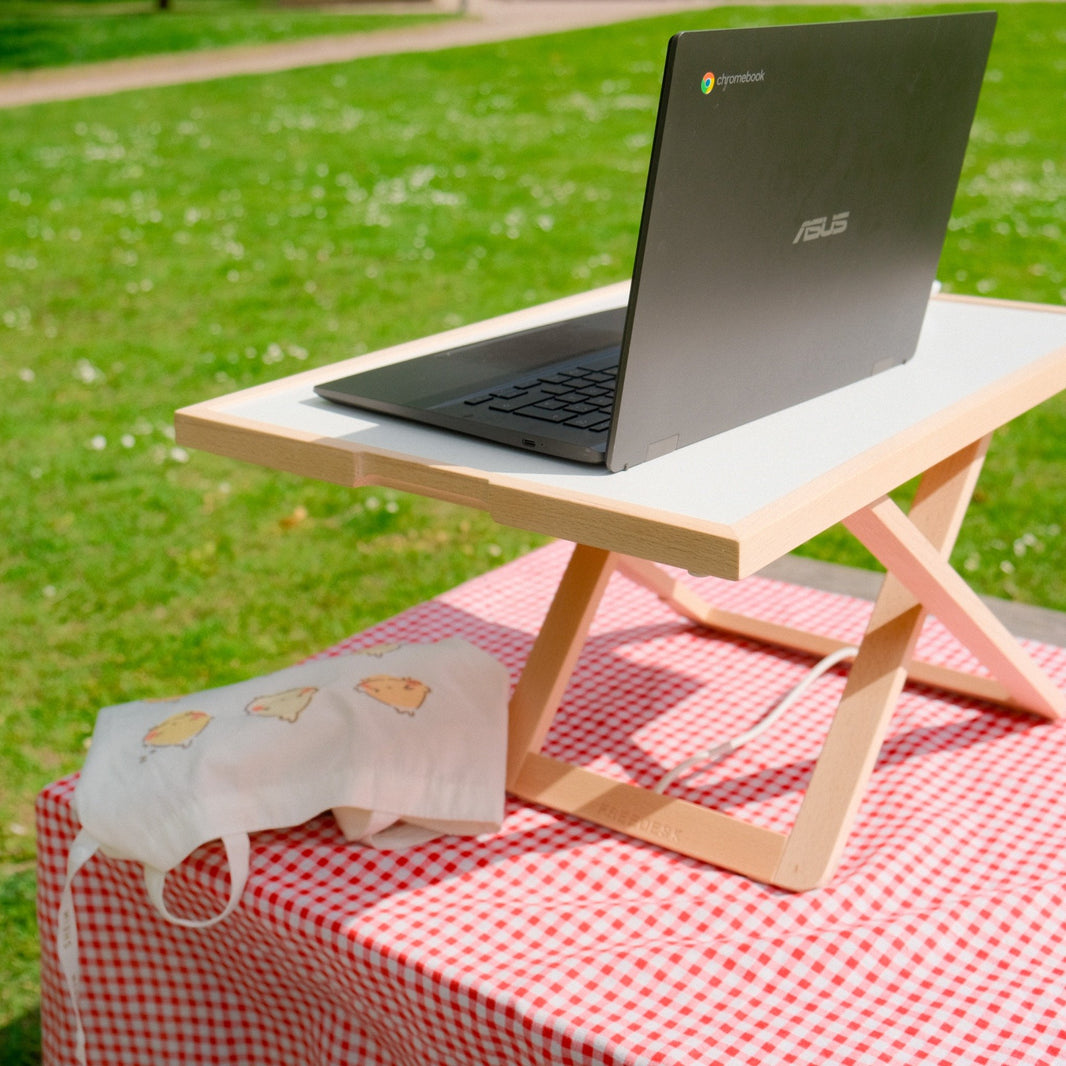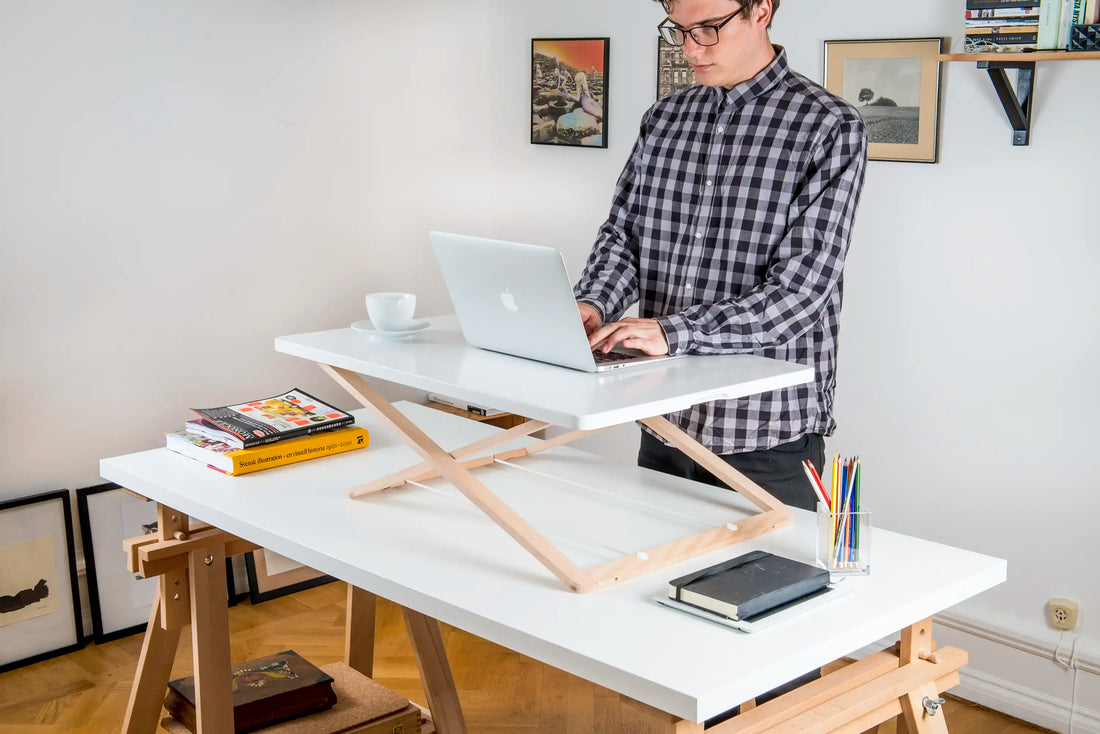
Truth or myth? Stand up and work
Share
Standing up and working at a height-adjustable desk or Desk Riser has become increasingly popular. Many see it as a solution to the negative health effects of prolonged sitting, but there are several misconceptions about standing work. What does the research really say? Here we address the most common myths.
Myth 1: Standing all day is better than sitting
It is a common belief that the more you stand, the better it is for your health. However, research shows that it is best to alternate between sitting and standing. According to the European Agency for Safety and Health at Work (EU-OSHA), prolonged standing can lead to problems in the legs, knees, ankles and feet, as well as lower back pain and fatigue ( osha.europa.eu ).
✅ Solution: It is recommended to alternate between sitting, standing and movement during the workday to avoid repetitive strain injuries.
Myth 2: Standing and working burns many more calories than sitting
Many people believe that by using a height-adjustable desk or a Desk Riser they can burn significantly more calories. According to an article in MåBra , standing up alone does not burn enough calories to lead to weight loss ( mabra.com ).
✅ Solution: Standing work does not contribute significantly to weight loss, but can improve blood circulation and reduce the risk of metabolic diseases.
Myth 3: A height-adjustable desk solves all ergonomic problems
Many people think that as soon as they get a desk riser or an adjustable desk, their back problems will disappear. But ergonomics is about how you use your workstation, not just what equipment you have. According to the Center for Occupational and Environmental Medicine, prolonged low-intensity work without breaks and variety can lead to unfavorable strain on the muscles ( camm.regionstockholm.se ).
✅ Solution: To get the most out of a Desk Riser you should combine it with an ergonomic chair, the right screen height and regular breaks for movement.
Myth 4: Standing and working automatically makes you more productive
There is a perception that standing work automatically increases productivity. However, according to the Swedish Public Health Agency, both prolonged sitting and prolonged standing can increase the risk of musculoskeletal disorders and other ill health. It is therefore important to vary your working position to promote health and productivity ( folkhalsomyndigheten.se ).
✅ Solution : Try using your Desk Riser during tasks that require less fine motor skills or high concentration, such as video meetings or brainstorming sessions, and vary your working position to find what works best for you.
Myth 5: Standing and moving around reduces the risk of heart problems
There is a perception that standing work in itself is enough to reduce the risk of heart disease. But research shows that it takes more than just standing up to achieve these health benefits. According to a study published in Forskning & Hälsa, prolonged sitting increases the risk of heart disease, but it is regular movement breaks and physical activity that have the greatest positive effect on heart health ( forskninghalsa.se ).
✅ Solution: To reduce the risk of heart problems, you should not only stand up, but also regularly take short movement breaks and supplement with physical activity during the day.
What does the research say in summary?
✔ Variation is key – alternate between sitting and standing.
✔ Stand up to improve blood circulation, but combine it with movement. ✔ A Desk Riser is a great tool, but it must be used correctly to provide real benefits.
Do you want to optimize your workplace ergonomics? Read more about our desk risers and how they can help you create a better working environment: Freedesk Desk Riser


